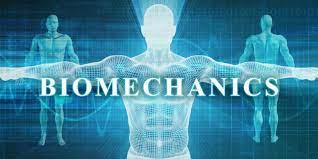Fields of Study
The faculty of Biomedical Engineering at Sahand University of Technology currently covers the following majors: Bioelectrics and Biomechanics
Bioelectrics  focuses on the study of biological signal. This field involves the acquisition, processing, and interpretation of various biological signals, such as electrocardiograms (ECGs), electroencephalograms (EEGs), electromyograms (EMGs), and others, which provide valuable insights into an organism's physiological state and are essential for diagnosing and monitoring diverse health conditions. Additionally, bioelectric engineering encompasses the analysis of medical 2D-3D images obtained through modalities like CT, MRI, and ultrasound, allowing for the detection of diseases or abnormalities and patient monitoring. As a bioelectric engineer, you will gain expertise in designing and optimizing devices and algorithms capable of capturing and analyzing these signals and images. Your work will not only contribute to advancing technology but also have a direct impact on improving patient care and enhancing our understanding of human physiology. The field of bioelectric engineering is continuously evolving, with new breakthroughs and technologies emerging at an accelerated pace. By pursuing a career in this field, you will be part of a cutting-edge community that strives to create a healthier and more connected world. Your contributions will help shape the future of medicine and improve the quality of life for individuals around the globe.
focuses on the study of biological signal. This field involves the acquisition, processing, and interpretation of various biological signals, such as electrocardiograms (ECGs), electroencephalograms (EEGs), electromyograms (EMGs), and others, which provide valuable insights into an organism's physiological state and are essential for diagnosing and monitoring diverse health conditions. Additionally, bioelectric engineering encompasses the analysis of medical 2D-3D images obtained through modalities like CT, MRI, and ultrasound, allowing for the detection of diseases or abnormalities and patient monitoring. As a bioelectric engineer, you will gain expertise in designing and optimizing devices and algorithms capable of capturing and analyzing these signals and images. Your work will not only contribute to advancing technology but also have a direct impact on improving patient care and enhancing our understanding of human physiology. The field of bioelectric engineering is continuously evolving, with new breakthroughs and technologies emerging at an accelerated pace. By pursuing a career in this field, you will be part of a cutting-edge community that strives to create a healthier and more connected world. Your contributions will help shape the future of medicine and improve the quality of life for individuals around the globe.
Biomechanics  is concerned with the study of the structure, function and interaction of living beings with their physical environment. Addressing the mechanical laws that govern the activities of all creatures, from nanoscale organisms to humans and even giant see and land animals, is well within the borders of Biomechanical Engineering. This fascinating branch of engineering is only a few decades old and none the less has made significant contributions to medical science and human well-being. These cutting-edge achievements include (but not limited to) the design and manufacture of practical artificial organs, Implants and robotic devices which have shown promising outcomes in improving the level of human life. In this era, many knowledge-based products have been introduced into the healthcare market and gained a noticeable market share in, in recent years. The primary sub-branches of biomechanical engineering include mechanics of the hard and soft biological tissues, bio-fluid mechanics, biomechanics of motion analysis, musculoskeletal biomechanics, sport biomechanics, rehabilitation engineering, molecular and cellular mechanics and biomechanics of injury and healing.
is concerned with the study of the structure, function and interaction of living beings with their physical environment. Addressing the mechanical laws that govern the activities of all creatures, from nanoscale organisms to humans and even giant see and land animals, is well within the borders of Biomechanical Engineering. This fascinating branch of engineering is only a few decades old and none the less has made significant contributions to medical science and human well-being. These cutting-edge achievements include (but not limited to) the design and manufacture of practical artificial organs, Implants and robotic devices which have shown promising outcomes in improving the level of human life. In this era, many knowledge-based products have been introduced into the healthcare market and gained a noticeable market share in, in recent years. The primary sub-branches of biomechanical engineering include mechanics of the hard and soft biological tissues, bio-fluid mechanics, biomechanics of motion analysis, musculoskeletal biomechanics, sport biomechanics, rehabilitation engineering, molecular and cellular mechanics and biomechanics of injury and healing.
